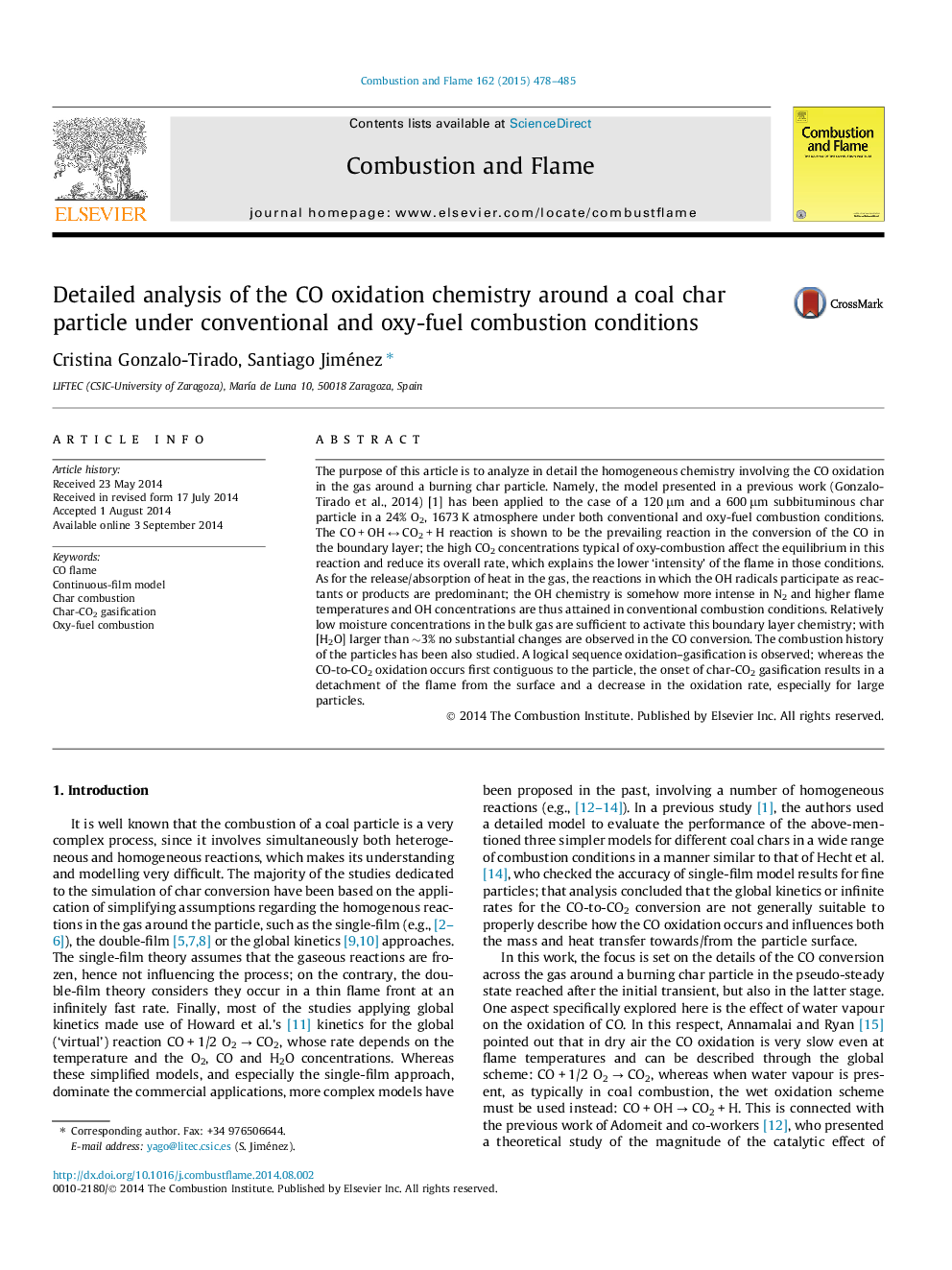| Article ID | Journal | Published Year | Pages | File Type |
|---|---|---|---|---|
| 168870 | Combustion and Flame | 2015 | 8 Pages |
The purpose of this article is to analyze in detail the homogeneous chemistry involving the CO oxidation in the gas around a burning char particle. Namely, the model presented in a previous work (Gonzalo-Tirado et al., 2014) [1] has been applied to the case of a 120 μm and a 600 μm subbituminous char particle in a 24% O2, 1673 K atmosphere under both conventional and oxy-fuel combustion conditions. The CO + OH ↔ CO2 + H reaction is shown to be the prevailing reaction in the conversion of the CO in the boundary layer; the high CO2 concentrations typical of oxy-combustion affect the equilibrium in this reaction and reduce its overall rate, which explains the lower ‘intensity’ of the flame in those conditions. As for the release/absorption of heat in the gas, the reactions in which the OH radicals participate as reactants or products are predominant; the OH chemistry is somehow more intense in N2 and higher flame temperatures and OH concentrations are thus attained in conventional combustion conditions. Relatively low moisture concentrations in the bulk gas are sufficient to activate this boundary layer chemistry; with [H2O] larger than ∼3% no substantial changes are observed in the CO conversion. The combustion history of the particles has been also studied. A logical sequence oxidation–gasification is observed; whereas the CO-to-CO2 oxidation occurs first contiguous to the particle, the onset of char-CO2 gasification results in a detachment of the flame from the surface and a decrease in the oxidation rate, especially for large particles.
